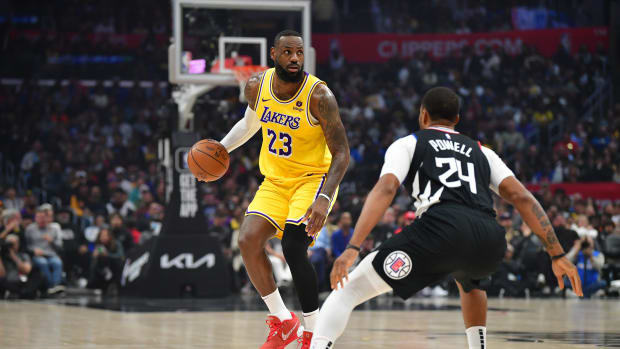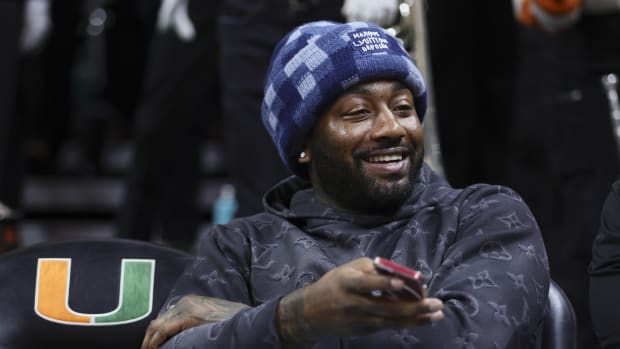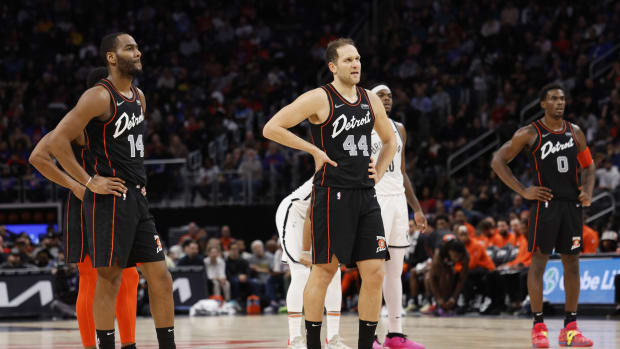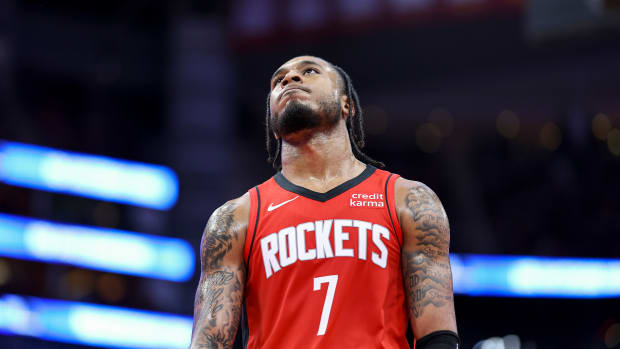Top 100 NBA Players of 2020: Biggest Snubs
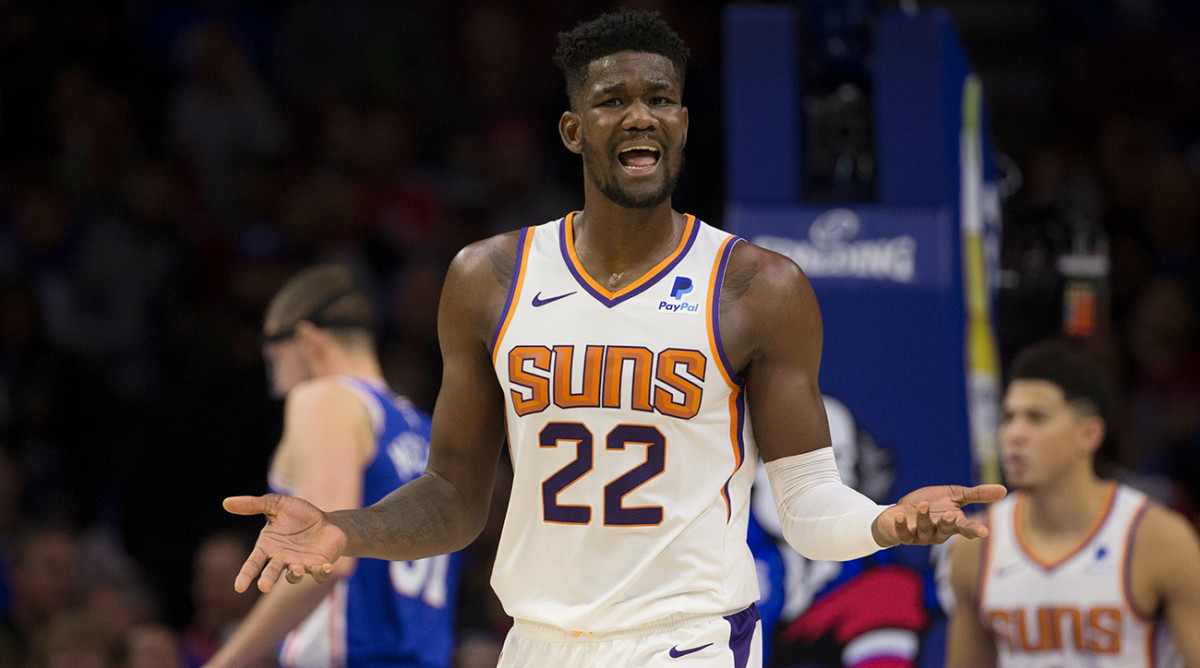
The making of a defined list—like our ranking of the Top 100 NBA Players of 2020—inevitably snubs candidates well worthy of consideration.
In some sense, stopping with the 100 best players in the league is an arbitrary endpoint. There isn't a dramatic difference between our final pick and those players who narrowly missed the cut, and a compelling case could be made for many of the omitted players. This list is not explicitly a queue of players who would be ranked from 101-125, but a combination of two groups: those who came close to making the Top 100 and those who are notable in some other capacity.
Here are those 25 players, in alphabetical order:
Kyle Anderson, Grizzlies: Anderson is expected to make a full return from shoulder surgery by the start of training camp, though he makes for a borderline case regardless. Not every team has room for a quirky, pass-first who doesn’t actually present as much of a scoring threat. When Anderson’s game works within a team context, it really works. When it doesn’t, his limitations can make a whole system feel stodgy.
Trevor Ariza, Kings: When a 3-and-D wing is neither shooting nor defending not defending like he used to, some reconsideration is in order. In fairness, playing for the Wizards and Suns isn’t easy. It also probably isn’t as hard as Ariza sometimes made it look. Still a good player, but at 34 years old and counting, seems to be moving into a different phase of his career.
Deandre Ayton, Suns:It’s only a matter of time. Ayton is already a better player than he was when he joined the league a year ago, and will have a chance to develop in a healthier on-court ecosystem this season with the signing of Ricky Rubio and the full-time return of Devin Booker. With a bit more seasoning, expect Ayton to become a Top 100 fixture.
Marvin Bagley, Kings: See above. Ayton and Bagley are in a similar boat as productive young players who haven’t quite pinned down the nuances of winning basketball. That’s not really a slight; it’s hard to be proficient in professional-grade systems as a 20-year-old, which is why veterans comprise the bulk of our list.
Will Barton, Nuggets:Most of the blame for Barton’s season is owed to a persistent groin injury. Yet his play was so counterproductive last season as to warrant some kind of penalty. If Barton is back to his 2017-18 self, he’ll likely be back in the Top 100 next year. If that career-best season proves to be his clear peak, he’ll probably stay on the bubble.
Nicolas Batum, Hornets:It was a good run for Nicolas Batum, who will turn 31 this season but somehow plays as if he were three years older. Even on a Charlotte team that very much needed more scoring and more playmaking, Batum capped out at 9.3 points and 3.3 assists per game—his lowest averages since his rookie year. There’s a reasonably useful role player here somewhere, but nothing more than that.
Malik Beasley, Nuggets: In a league where the demand for 3-and-D wings far outpaces the supply, Beasley proved to have the right stuff in both critical regards. In the absence of Gary Harris, Denver’s default perimeter stopper, Beasley handled the toughest defensive assignments admirably. He also shot 40% from beyond the arc while leading the Nuggets in made threes. The best part: Beasley can do enough off the bounce to where his game doesn’t feel hemmed in.
Bogdan Bogdanović, Kings:The strength of Bogdanović’s game is the way he plugs into an offense. There are wings who make plays because they believe a perimeter player should, and there are wings who make plays because the rhythm of the game demands it. Bogdanović is in the latter category. Start up the action and he’ll navigate accordingly, sliding into open spaces and setting up the next man in sequence. The gaps in his game (Bogdanović should really be a better defender and rebounder, considering his size) cost him in the Top 100 running, but he’s a joy to watch, regardless.
Goran Dragić, Heat: Dragić is a 33-year-old point guard with an uneven jump shot coming off of arthroscopic knee surgery. Apprehension seems only fair, even where a competitor as dogged as Dragić is concerned.
Shai Gilgeous-Alexander, Thunder:Of all the young players under consideration, Gilgeous-Alexander felt the least predictable. His developmental arc is as amorphous as his game. Somehow, Gilgeous-Alexander is not quite a point guard, not quite a shooting guard, and not quite a combo guard, either, at least in the classic sense of the archetype. Where he goes from here is anyone’s guess, though there’s a lot to like in the way he feels out the game.
Jerami Grant, Nuggets: As recently as four years ago, Grant was a small forward who didn’t seem to have the ball skills to stick in the league. Moving to a new position changed everything. Once he started playing power forward, Grant’s bounce and mobility—impressive by any standard—worked to exaggerated effect. There aren’t many bigs who can move like Grant, or even that many who shoot (39.2% from three last season) like him. Grant is 25-years-old and already one of the NBA’s great developmental success stories.
JaMychal Green, Clippers:The stretch in Green’s game feels more advantageous now than ever. A few years of spacing out offense to the three-point line has helped him settle into the role, settling his jumper and showing when to drive. Green is quietly a pretty crucial player for the Clippers this season. His contributions also might be too quiet for the purposes of the Top 100.
Rodney Hood, Blazers: When playoff defenses take the ball away from a team’s best players, their supporting cast has to be able to improvise. That’s where Hood comes in. It takes a very specific skill set to pick up control of an offense in the middle of a quarter and create as a situation requires. Yet for as valuable as that might be in pulling out a playoff series, it’s tough for any player to make the Top 100 cut without playing a bigger role, playing better defense, or contributing something unique off the ball.
Dwight Howard, Lakers:There’s always some chance that Howard stays healthy, does all the right things, and resuscitates his career. We just have no reason to expect it.
Reggie Jackson, Pistons:Part of the Top 100 process is attempting to understand where we went wrong in previous years. For one: We were too kind to replaceable starting point guards. Any number of players could throw up a somewhat-hollow 15 points and four assists a game if given the opportunity to start and play considerable minutes. So why should we reward those like Jackson, just because their circumstances allowed it?
Enes Kanter, Celtics:Players like Kanter tend to mean very different things to teams trying to be good versus teams trying to be great. What pushes him out of the Top 100 is how damaging he is to the latter pursuit. Any traditional center will run into some trouble staying on the floor when the game goes smaller. Kanter is uniquely vulnerable, both because he can’t really guard a pick-and-roll and because everyone in basketball knows it.
Jeremy Lamb, Pacers: As a solid all-around wing, Lamb actually has a fairly credible case for the Top 100—which speaks to just how far he’s come in the past three years. The argument against comes in negative space. Lamb simply does a little less of this or that. He might not pass like one candidate or defend as well as another; he might not create as much as other wings or score as efficiently as some others. All of which leaves Lamb stuck in the middle, effective though perhaps not fully appreciated.
Marcus Morris, Knicks: It was never a good thing when Morris turned out to be one of the best players on the floor for the Celtics last season. He has something to offer a contending team, but it’s not high-end shot creation. As was proved out in time, the limitations of Morris’ game really light up when his shot stops falling.
Terry Rozier, Hornets:When the Hornets see Terry Rozier, they see a $58 million man. When the rest of the basketball world sees Terry Rozier, they see a point guard without much of a shot, much in the way of vision, or all that much of a chance.
Dario Šarić, Suns:Šarić will always go out of his way to fit in on a team, sometimes to his own detriment. A Top 100 talent is there. Whether Šarić has a Top 100 disposition is up for debate. Floor spacing and cutting have real, tangible benefits to an offense. They also don’t allow Šarić to tap into the full extent of his game, forcing him to scrap for opportunities as he goes.
Dennis Schröder, Thunder:There’s no real advantage in playing Schröder as a starter, and not much to be gained, it seems, from playing him as a reserve. The 25-year-old point guard should have been the best backup Russell Westbrook ever had. Instead, the Thunder struggled to keep their heads above water whenever Schröder was on the floor. Putting up numbers (15.5 points and 4.1 assists per game) doesn’t signify much under those circumstances.
Landry Shamet, Clippers:If given the reps, it wouldn’t be all that surprising to see Shamet become one of the top three-point shooters in the game over the next few years. His particular brand of shooting tends to scale well; anyone who’s able to live in the mid-40s, percentage-wise, while taking shots on the move can act as a system all their own. We just need to see that side of Shamet’s game leveraged a bit further (or the rest of his game filled out a bit more) to qualify as one of the league’s top players.
Fred VanVleet, Raptors: VanVleet made some enormous, gutsy plays for the Raptors on their way to the championship. He also completely disappeared for about two straight weeks. The complete version of VanVleet, where we take the bad with the good, just isn’t quite consistent enough to crack the list.
Hassan Whiteside, Blazers:The contrast with Bam Adebayo, specifically, did Whiteside no favors. Trading off minutes with a high-energy backup threw every lifeless stretch from Whiteside into stark relief. It means something that he can get you a double-double. That something just isn’t worth all that much when he locks his team into playing specific offensive and defensive styles and then checks out whenever he likes.
Justise Winslow, Heat:Point Justise—an experiment born of necessity—proved to be a rousing success on an individual basis. Winslow himself has never looked better. Yet in order to get credit for leading an offense, that offense has to actually go somewhere. Miami was a bottom-five team in points per possession last season, drowning alongside the Grizzlies and Cavs. Evolving to fill a need is impressive. Making the Top 100 cut, however, requires more than change for its own sake.































